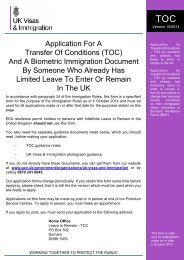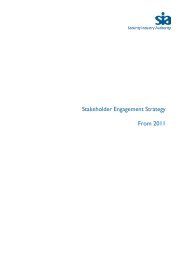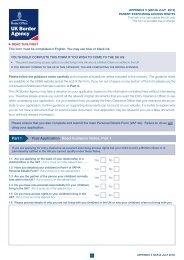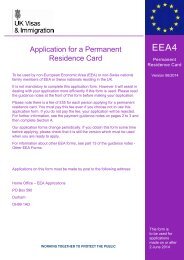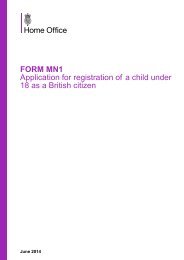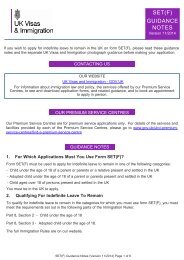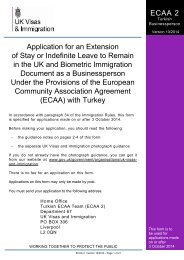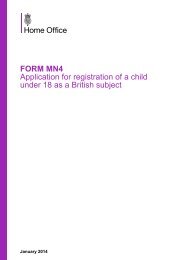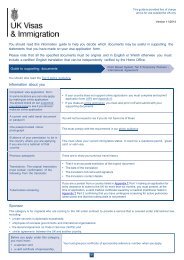Full Regulatory Impact Assessment for Manned Guards & Keyholders
Full Regulatory Impact Assessment for Manned Guards & Keyholders
Full Regulatory Impact Assessment for Manned Guards & Keyholders
You also want an ePaper? Increase the reach of your titles
YUMPU automatically turns print PDFs into web optimized ePapers that Google loves.
From its knowledge of the industry, the SIA estimates that this might result in 10– 11.5% of licence applicants failing the criterion (assuming that everyonecurrently per<strong>for</strong>ming manned guarding and keyholding activities applied and thatthe criminal statistics <strong>for</strong> the general population as a whole are directlyapplicable to the two industry sectors).• Option 2: Refuse a licence to anyone with any criminal record other than <strong>for</strong>minor offences.This option would exclude from licensing all those excluded under option 1 plusall those with other criminal offences on their record other than those of the mosttrivial nature – i.e. those offences which are triable only summarily and <strong>for</strong> whichonly non custodial sentences are available (e.g. minor motoring offences,causing a nuisance). From its knowledge of the industry, the SIA estimates thatthis might result in at least 25% of licence applicants failing the criterion (with thesame assumptions applying as <strong>for</strong> option 1).• Option 3: Establish a set of criteria which seek to balance the need to make areal difference to criminality and professional standards in the industry, with theneed <strong>for</strong> the criteria to be proportionate to the risks faced, place no additionalburdens on business and allow bona fide businesses to continue to be viable.This option would take into account a wider range of factors than simply theoffences on the criminal record, including the intrinsic seriousness of the offence,the length of time elapsed since the last offence and, in some borderlinedecisions, the nature of the sentence imposed by the courts. This option has thebenefit of being able to balance rigour with rehabilitation, since it would offset thecriminal record itself against the length of recent time spent crime free. Nosingle factor would predominate in the licensing decision, allowing a greaterdegree of perceived fairness, balance and transparency to be achieved. Fromits knowledge of the industry, the SIA estimates that this option is likely to resultin 12 – 14% of applicants failing the criterion. Detailed in<strong>for</strong>mation about thecriminality check can be seen at Appendix 4 and in<strong>for</strong>mation about criminalrecords check on non British nationals or applicants who have spent time outsideof England and Wales can be seen at Appendix 5.2.5 It is difficult to estimate the exact figures that could be precluded because ofhaving relevant criminal convictions. The figures above are estimates based on generalpopulation statistics, in addition to SIA estimations of the size of the industry. Owing tothe nature of the individual activity, the figures may vary in the different sectors ofmanned guarding.2.6 There are risks attached to each option. The chief risk of option 1 is that ifstandards are set too low, then the SIA will make no real difference to criminality levelsand professional standards in the regulated sectors. This is a high risk and one whichwould carry significant costs <strong>for</strong> the public, the police and law-abiding operators in themanned guarding and keyholding sectors of the industry.2.7 The closer a licensing scheme moved towards option 2, the greater the riskthat the regulated sectors would become economically non-viable. Criminal statisticsshow that (in the knowledge that the industry is male dominated) between 29% and34% of males aged between 18 and 40 will have a criminal conviction <strong>for</strong> a standard list8



